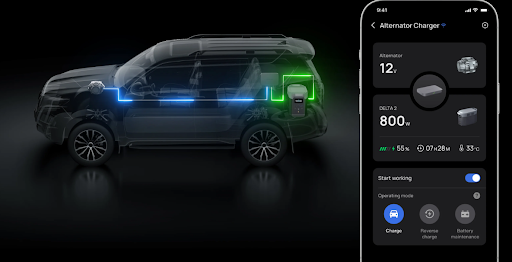Kirill Yurovskiy: The Use of Neural Interfaces in Web Design of the Future
In the not-so-distant future, how we connect with the computerized world is set for a change in perspective. Envision perusing the web without even investing an ounce of effort, controlling your shrewd home with a simple idea, or encountering vivid computer-generated simulations that answer your feelings continuously. This isn’t sci-fi — it’s the commitment of brain interfaces in website composition. As cerebrum PC interface (BCI) innovation quickly progresses, it’s ready to rethink our web-based encounters in manners we’re simply starting to envision.
The Neural Revolution
Neural interfaces, once the stuff of cyberpunk books, are rapidly becoming a reality. Considering uncommon degrees of control and cooperation, these devices make an immediate correspondence pathway between the cerebrum and outside gadgets. While current applications center around clinical and assistive advances, the potential for BCIs in buyer tech—especially website composition—is gigantic.
Driving tech organizations and new companies are vigorously investing in BCI research. Elon Musk’s Neuralink intends to make high-transfer speed mind-machine interfaces, while Facebook (presently Meta) has been dealing with painless BCI frameworks for a really long time. As these innovations mature, they’re set to change how we plan and connect with advanced interfaces.
Web Design: From Clicks to Thoughts
The mix of brain interfaces into website architecture vows to make our internet-based cooperations more natural, productive, and customized than at any other time – says Kirill Yurovskiy. Here’s how BCIs could reshape critical aspects of web design:
1. Navigation and Control
Traditional input methods like mouse clicks what’s more console strokes could be updated. All things being equal, clients could explore sites and applications utilizing thought orders. Envision looking at a page by thinking “down” or opening a connection by concentrating on it. This immediate cerebrum to-PC correspondence could emphatically accelerate perusing and decrease actual strain.
Website specialists should make new visual and non-obvious signs to assist clients with understanding what components are intuitive and how to control them with their viewpoints. This could include fostering a normalized “thought language” for web activities.
2. Personalization and Adaptive Interfaces
Neural interfaces could provide phenomenal experiences in client inclinations and close-to-home states. Sites could continuously adjust based on a client’s considerations and sentiments. For example, if a client feels overpowered by a jumbled connection point, the site could naturally improve its design. Alternatively, if a client is amped up for a specific item, the site could offer more nitty-gritty data and related things.
This degree of personalization goes beyond current computer-based intelligence-driven proposals. It would require website specialists to make liquid, particular points of interaction fit for reshaping themselves in light of brain criticism.
3. Immersive Experiences
Virtual and augmented reality experiences could be unbelievably similar to brain interface combinations. Website specialists could make multisensory sites that clients don’t simply have any idea and hear, yet in addition feel and maybe even smell or taste. This could reform web based business, permitting clients to “take a stab at” garments or “test drive” vehicles in a completely vivid virtual climate.
Architects should consider making and adjusting these multisensory encounters without overpowering clients. They’ll likewise have to foster new instruments and systems for building these intricate, responsive conditions.
4. Accessibility and Inclusivity
Neural interfaces can make the web more open than at any other time in recent memory. Individuals with actual inabilities could peruse and associate with sites utilizing thought alone. Those with visual debilitations may “see” web content through direct brain excitement, while those with hear-able disabilities could “hear” sound substance.
This would require website specialists to reconsider openness and make connection points general and versatile to many brain sources of information and results.
5. Emotional Design
BCIs could progressively detect users’ emotional reactions to web content. This would consider the making of sincerely keen sites that change their tone, content, and configuration in light of the client’s temperament. For instance, a news site could introduce data contrastingly to a restless client versus one who’s feeling inquisitive.
Planners should foster new abilities in close-to-home plans and brain science to make interfaces that answer properly to clients’ states. Read about me
Challenges and Considerations
While the capability of brain interfaces in website architecture is energizing, it additionally accompanies enormous difficulties:
Protection and Security: BCIs might actually access clients’ viewpoints and feelings, raising serious protection concerns. Website specialists and designers should make hearty safety efforts and straightforward information arrangements to safeguard clients’ psychological information.
Moral Contemplations: The capacity to impact clients’ considerations and feelings straightforwardly raises moral issues. Clear rules and guidelines should forestall control and guarantee client independence.
Normalization: Brain connection points should work across various sites and stages, so normalized conventions and APIs should exist. This will require joint effort across the tech business.
Cognitive Load: While brain interfaces guarantee more natural connections, they might actually increase mental burden if they are not planned cautiously. Offsetting effectiveness with client solace will be urgent.
Availability: While BCIs could upgrade openness for specific clients, they could create new boundaries for others. Guaranteeing that sites stay available to clients with and without brain points of interaction will be fundamental.
Specialized Restrictions: Current BCI innovation is restricted in accuracy and data transmission. Website architecture should develop in close proximity to progressions in brain interface capacities.
Tools and Technologies
As brain interfaces become more predominant, new apparatuses and advances will arise to help them mix into website composition:
Brain UX Plan Suites: Specific programming for making and testing thought-controlled interfaces.
Feeling Planning Apparatuses: Projects that help architects imagine and answer clients’ personal information.
Multisensory Content Creation Stages: Apparatuses for making and overseeing vivid, multisensory web encounters.
Brain Openness Checkers: Programming that guarantees sites are viable with different kinds of brain interfaces and available to clients with various capacities.
Thought Pattern Libraries: Assortments of normalized thought orders that creators can integrate into their connection points.
Neuro-Responsive Structures: Web advancement systems improved for making versatile, thought-responsive designs.
The Role of AI
Computerized reasoning will be essential in deciphering and following up on the mind-boggling information streams from brain interfaces. Computer-based intelligence calculations could:
- Anticipate client goals in light of halfway thought orders.
- Break down close to home reactions to calibrate client encounters.
- Create customized content and connection points continuously.
- Deal with the intricacy of multisensory, versatile web conditions.
- Website specialists will progressively work close by artificial intelligence frameworks, zeroing in on significant level plan procedures. In contrast, artificial intelligence handles a large number of existing apart from everything else to-second transformations.
Preparing for the Neural Web
How might planners and engineers prepare as we stand near the very edge of this brain transformation in website composition?
1. Remain Informed: Stay aware of the most recent improvements in BCI innovation and its possible applications in website architecture.
2. Foster New Abilities: Begin learning about neuroscience, a close-to-home plan, and multisensory client encounters.
3. Explore different avenues regarding Models: As brain interface dev units become accessible, try different things with thought-controlled interfaces.
4. Team up Across Disciplines: Cooperate with neuroscientists, clinicians, and ethicists to investigate the full ramifications of this innovation.
5. Advocate for Principles: Participate in conversations and working gatherings focused on creating norms for brain web associations.
6. Think about the Ramifications: Discuss the moral, protection, and security ramifications of brain interfaces in website architecture.
The Future is Neural
The integration of neural interfaces into website composition addresses a quantum jump in the way we collaborate with computerized content. It vows to make our internet-based encounters more instinctive, vivid, and customized than at any time in recent memory. Notwithstanding, it likewise brings critical difficulties that will require cautious thought and cooperative critical thinking.
As we move towards this brain future, website specialists have an urgent role to play. They should dominate new advancements and plan standards as well as wrestle with the moral and cultural ramifications of their work. The sites representing things to come won’t simply be accessed through screens—they’ll be capable straightforwardly through our viewpoints and feelings. It’s a significant obligation and an unbelievable chance to significantly reshape the computerized world.






